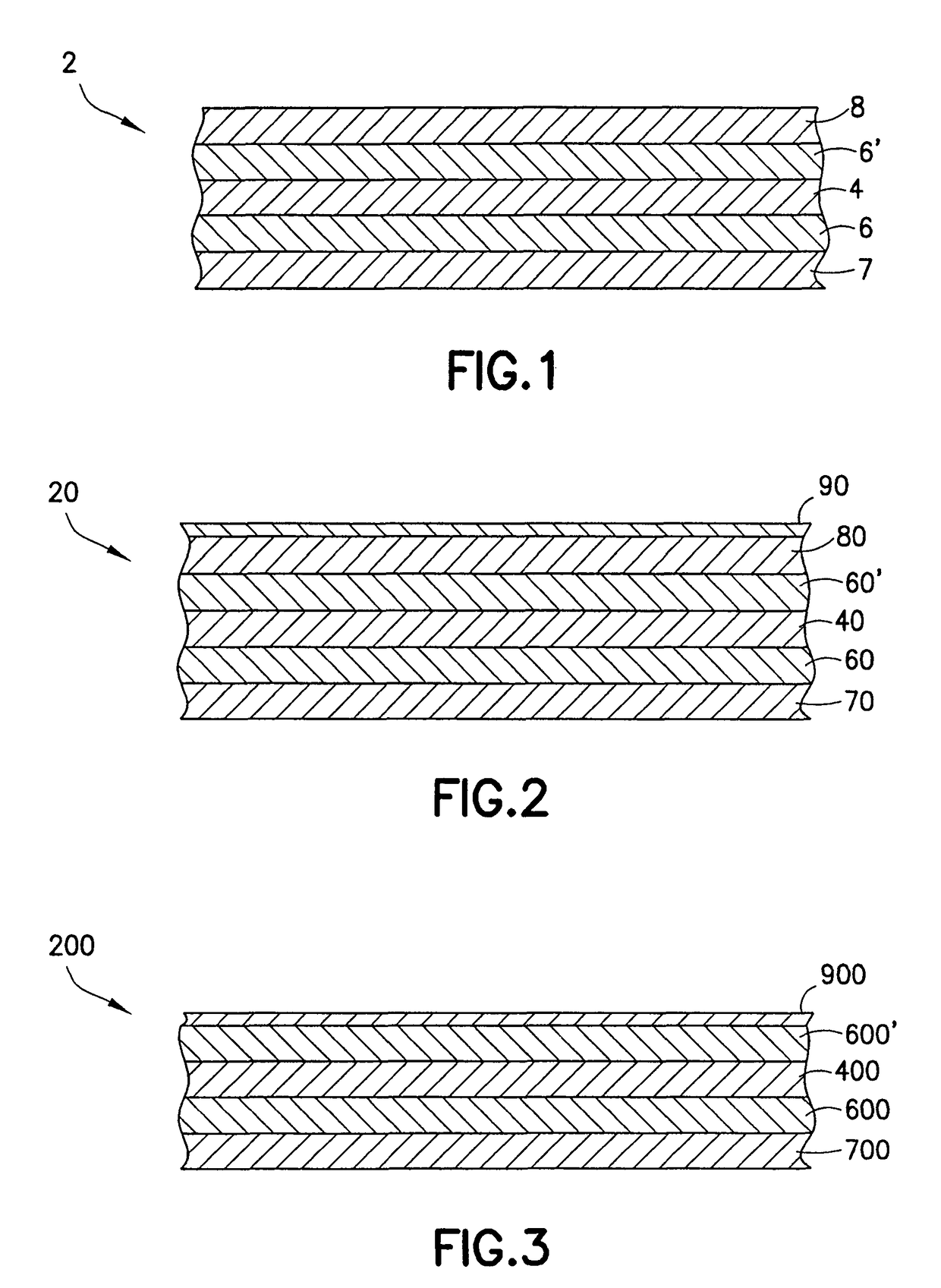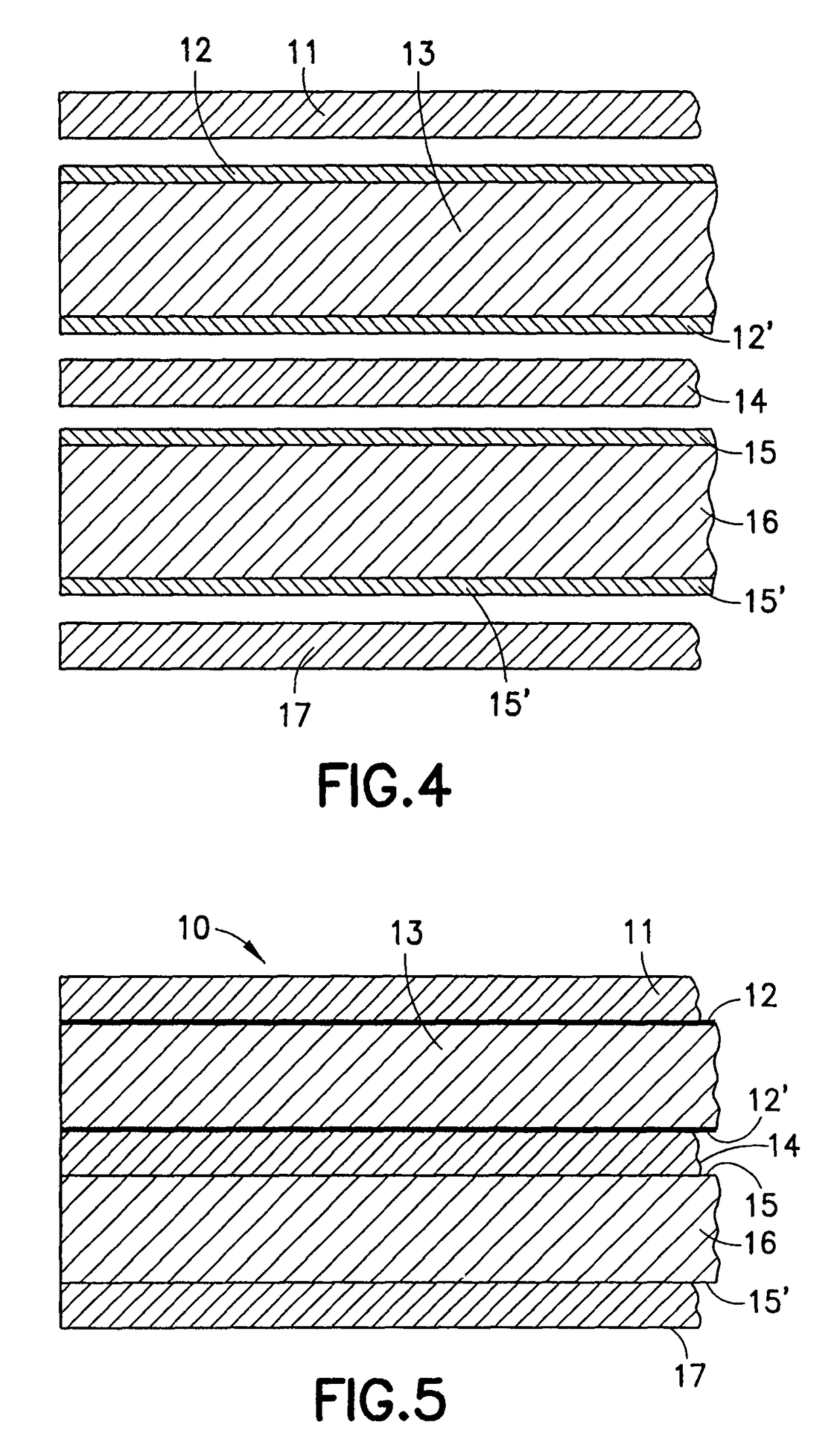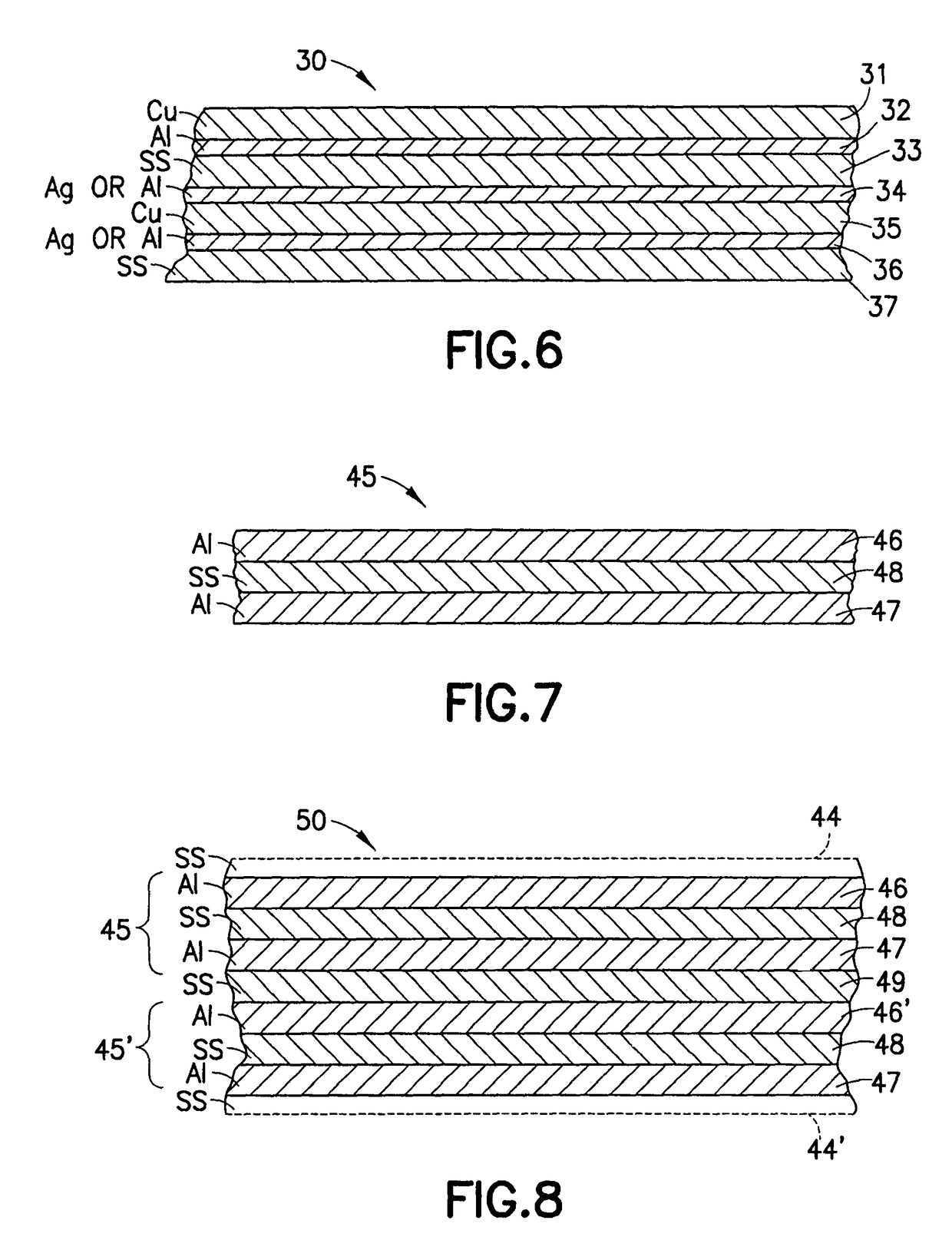Bonded metal components having uniform thermal conductivity characteristics
a technology of thermal conductivity and bonded metal, which is applied in the direction of application, baking vessels, soldering apparatus, etc., can solve the problems of thermal warpage and accelerated thermal degradation of non-stick surfaces, and achieve the effect of preventing sound metallurgical bonding
- Summary
- Abstract
- Description
- Claims
- Application Information
AI Technical Summary
Benefits of technology
Problems solved by technology
Method used
Image
Examples
Embodiment Construction
[0022]With reference now to the appended drawings, FIG. 1 schematically depicts, in cross section, one preferred embodiment of a bonded metal composite sheet 2 of the present invention. The composite sheet 2 is a multi-layered, rolled bonded construction comprising a thermal barrier layer 4 of a material having a lower coefficient of thermal conductivity than the other metal layers in the composite metal sheet 2. The presently preferred material for the lower thermal conductivity layer 4 is titanium or titanium alloy because of its relatively lower heat conductivity coefficient compared with the aluminum coupled with its light weight, which is comparable to aluminum. Stainless steel has a coefficient of heat conductivity similar to that of titanium and may be used for the layer 4. Stainless steel is less expensive than titanium but is heavier, adding to the weight of the cooking vessel. In the composite sheet 2 of FIG. 1, the titanium layer 4 is roll bonded on both sides between alu...
PUM
| Property | Measurement | Unit |
|---|---|---|
| temperature | aaaaa | aaaaa |
| temperature | aaaaa | aaaaa |
| thick | aaaaa | aaaaa |
Abstract
Description
Claims
Application Information
 Login to View More
Login to View More - R&D
- Intellectual Property
- Life Sciences
- Materials
- Tech Scout
- Unparalleled Data Quality
- Higher Quality Content
- 60% Fewer Hallucinations
Browse by: Latest US Patents, China's latest patents, Technical Efficacy Thesaurus, Application Domain, Technology Topic, Popular Technical Reports.
© 2025 PatSnap. All rights reserved.Legal|Privacy policy|Modern Slavery Act Transparency Statement|Sitemap|About US| Contact US: help@patsnap.com



